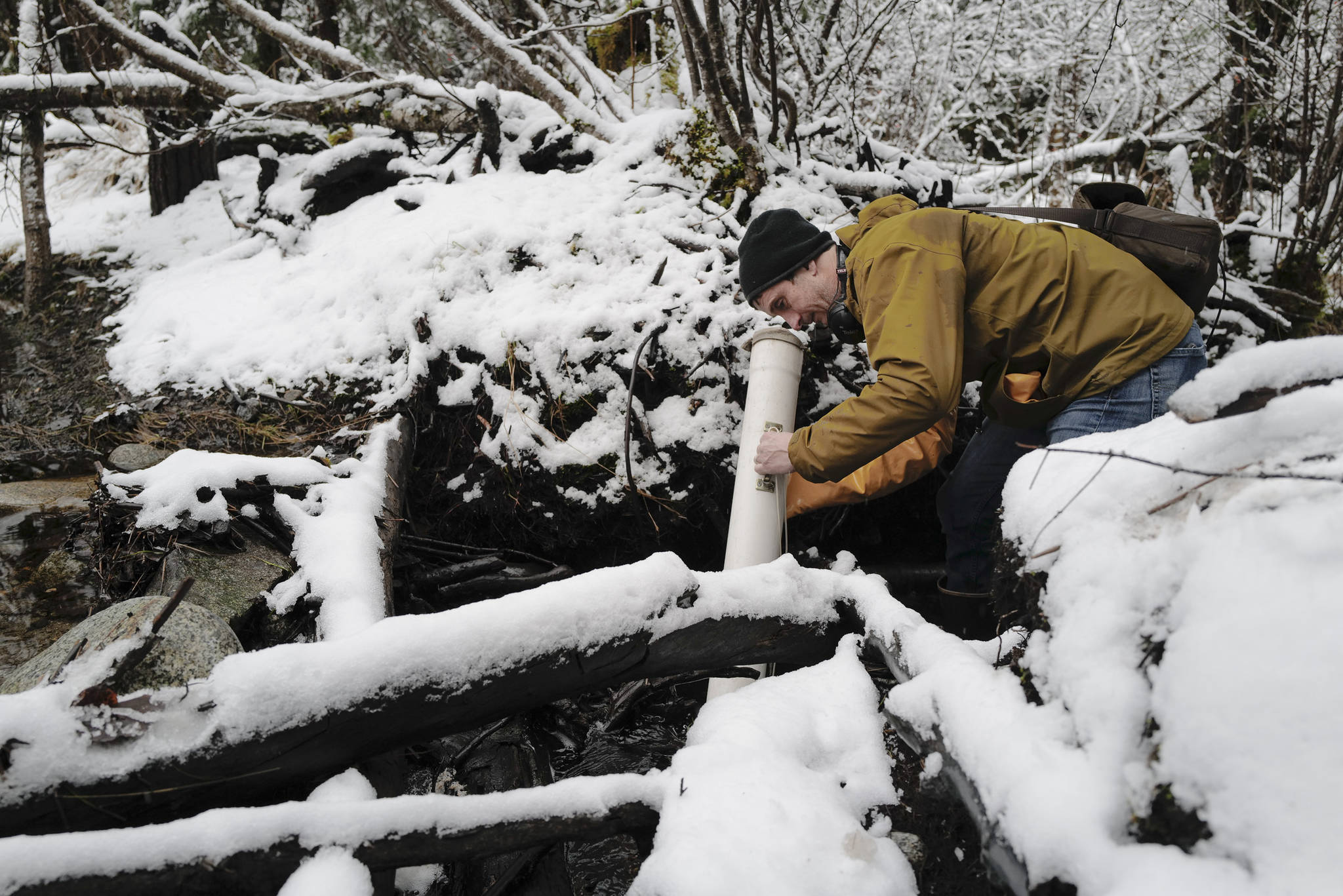Standing next to “Colossal,” one of the beaver dams in the Dredge Lakes area, it’s not hard to imagine how difficult it is for coho salmon to traverse. The dam barricades off all but a narrow strip of a slough east of Dredge Lake, where water passes over a two-foot-high waterfall.
Dams act as both a positive and negative for coho salmon, which swim through the middle of the beaver habitat to spawn in nearby Powerline Creek, said U.S. Forest Service fisheries biologist Jake Musslewhite. Using radio telemetry, an animal tracking method using radio signals, Musslewhite tracked five spawning salmon this fall. He found obstacles like dams significantly thwarted salmon’s progress to Powerline Creek.
Musslewhite thinks it’s the first radio-telemetry study conducted in the area.
“All these ponds actually make great rearing habitat, so it’s a good place for little baby coho to grow up,” he said. “But you need the adult coho to make those little baby coho in the first place. So they have to get over those beaver dams all the way back up to the base of the mountain there.”
Musslewhite led the Empire on a hike on Wednesday morning to the dam site, only about a 15-minute walk from the Juneau Ranger District office. Two months earlier, Musslewhite and Juneau-Douglas High School: Yadaat.at Kalé students equipped five cohos with radio tags, which were then used to track the fish using a receiver and antenna.
“Each tag is transmitting on a specific frequency,” Musslewhite said. “So you can set the receiver just to listen on that frequency and using a directional antenna you can establish the direction it is and using the signal strength, or essentially the volume of the beep, you know when you’re getting closer.”
Musslewhite said the fish enter the system via Mendenhall River and Holding Pond, located a short distance from the river. It was in Holding Pond where Musslewhite and the students radio-tagged the cohos in October. Of the five fish tagged, only two made it past one of the dams adjacent to Holding Pond.
“Based on just a handful of fish in this pilot study, it looks like a pretty tough haul for them,” Musslewhite said. “A lot of them couldn’t even really clear the first step, a lot of them met an untimely demise at the hands of otters, and maybe even just one made it all the way to the spawning grounds out of the five I tagged.”
For over a decade, the Beaver Patrol has kept a close eye on the beaver population of Dredge Lakes. The nonprofit conducts various jobs in the area and have an official partnership with the U.S. Forest Service. Mary Willson said the group formed about 12 years ago and works to minimize trail flooding events and keep waterways open for spawning coho and Dolly Varden trout.
“We open up some dams, yes, (but) we seldom to destroy them altogether,” Willson said.
She said the nonprofit group surveys some of the salmon on their own but added Musslewhite’s research could be beneficial.
“What he learns about them getting up is, of course, useful, but it adds to what we also know,” she said.
Musslewhite said he plans to tag more salmon next year and continue to research their migrations.
• Contact sports reporter Nolin Ainsworth at 523-2272 or nainsworth@juneauempire.com.

